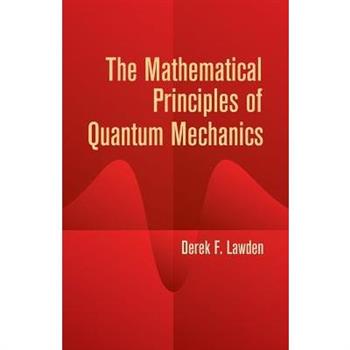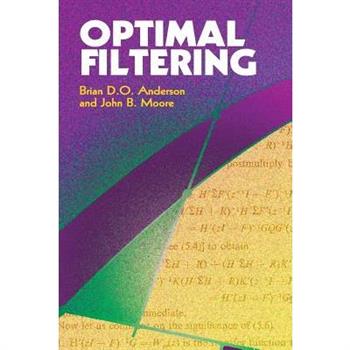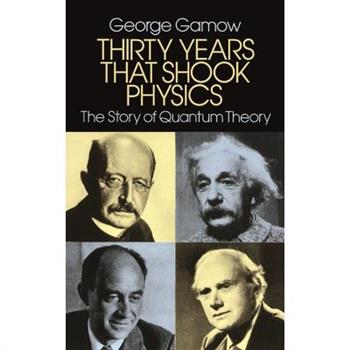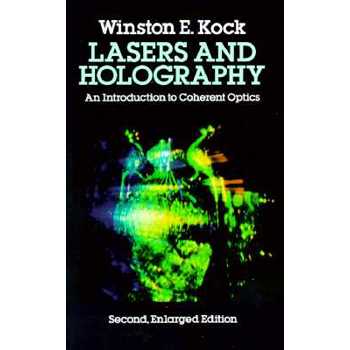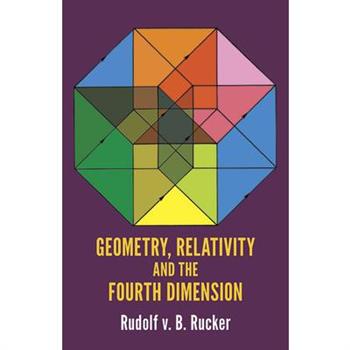An Introduction To Relativistic Quantum Field Theory
"Complete, systematic, self-contained...the usefulness and scope of application of such a work is enormous...combines thorough knowledge with a high degree of didactic ability and a delightful style." -- Mathematical ReviewsIn a relatively simple presentation that remains close to familiar concepts, this text for upper-level undergraduates and graduate students introduces the modern developments of quantum field theory. Starting with a review of the one-particle relativistic wave equations, it proceeds to a second-quantized description of a system of n particles, demonstrating the connection of this approach with the quantization of classical field theories. An examination of the restriction that symmetries impose on Lagrangians follows, along with a survey of their conservation laws. An analysis of simple models of field theories establishes the models' content, and the problematic aspects of quantized field theories are explored.Succeeding chapters present the Feynman-Dyson perturbation treatment of relativistic field theories, including an account of renormalization theory, and the formulation of field theory in the Heisenberg picture is discussed at length. The book concludes with an account of the axiomatic formulation of field theory and an introduction to dispersion theoretic methods, in addition to a set of problems designed to acquaint readers with aspects of field theory not covered in the text.
Elementary Wave Optics
This undergraduate textbook presents thorough coverage of the standard topics of classical optics and optical instrument design; it also offers significant details regarding the concepts of modern optics. Its survey of the mathematical tools of optics grants students insights into the physical principles of quantum mechanics. Two principal concepts occur throughout: a treatment of scattering from real scatterers (leading to Huygens' principles, diffraction theory, the index of refraction, and related topics); and the difference between coherent and noncoherent wave phenomena. Examinations of superimposition of field amplitudes and detection of intensities recur throughout the book. This highly physical approach is augmented by extensive appendixes of mathematical details. Two sets of problems appear at the end of each chapter and form a crucial part of the exposition. One set consists of well-tested problems with detailed solutions, paired with similar problems without supplied solutions. The other set contains short, easier exercises, filling the more conventional role of end-of-chapter problems.
The Mathematical Principles Of Quantum Mechanics
Most texts on quantum mechanics are primarily designed for physicists. This one, taking a somewhat different approach, is geared toward upper-level undergraduates and graduate students in applied mathematics, and offers a practical and accessible overview of the most powerful and widely used tool of modern mathematical physics. The author develops the subject in a systematic and logical manner from a minimal set of axioms. These axioms are either suggested by experience of the physical world or necessitated by the mathematical model's requirement of internal consistency -- an approach that will appeal to both applied mathematicians and mathematical physicists.The principles of the subject receive the primary focus throughout, and special physical problems appear strictly for the purpose of illustrating these principles. Suggestions for the solution of a large number of such problems are contained in the sets of exercises, of which there are more than a hundred. The theory is first developed for observables, such as the spin, which have only a finite number of eigenvalues. Later, the theory is extended to observables having continuous spectra; by this means, the theory's chief features are exhibited in the simplest possible mathematical context.
Classical Electricity And Magnetism
Compact, clear, and precise in its presentation, this distinguished, widely used textbook offers graduate students and advanced undergraduates a diverse and well-balanced selection of topics.Subjects include the electrostatic field in vacuum; boundary conditions and relation of microscopic to macroscopic fields; general methods for the solution of potential problems, including those of two and three dimensions; energy relations and forces in the electrostatic field; steady currents and their interaction; magnet materials and boundary value problems; and Maxwell's equations. Additional topics include energy, force, and momentum relations in the electromagnetic field; the wave equation and plane waves; conducting fluids in a magnetic field; waves in the presence of metallic boundaries; the inhomogeneous wave equation; the experimental basis for the theory of special relativity; relativistic kinematics and the Lorentz transformation; covariance and relativistic mechanics; covariant formulation of electrodynamics; and the Li矇nard-Wiechert potentials and the field of a uniformly moving electron.The text concludes with examinations of radiation from an accelerated charge; radiation reaction and covariant formulation of the conservation laws of electrodynamics; radiation, scattering, and dispersion; the motion of charged particles in electromagnetic fields; and Hamiltonian formulation of Maxwell's equations.
Optimal Filtering
This graduate-level text augments and extends beyond undergraduate studies of signal processing, particularly in regard to communication systems and digital filtering theory. Vital for students in the fields of control and communications, its contents are also relevant to students in such diverse areas as statistics, economics, bioengineering, and operations research.Topics include filtering, linear systems, and estimation; the discrete-time Kalman filter; time-invariant filters; properties of Kalman filters; computational aspects; and smoothing of discrete-time signals. Additional subjects encompass applications in nonlinear filtering; innovations representations, spectral factorization, and Wiener and Levinson filtering; parameter identification and adaptive estimation; and colored noise and suboptimal reduced order filters. Each chapter concludes with references, and four appendixes contain useful supplementary material.
An Introduction To Black Holes, Information And The String Theory Revolution
Over the last decade the physics of black holes has been revolutionized by developments that grew out of Jacob Bekenstein's realization that black holes have entropy. Stephen Hawking raised profound issues concerning the loss of information in black hole evaporation and the consistency of quantum mechanics in a world with gravity. For two decades these questions puzzled theoretical physicists and eventually led to a revolution in the way we think about space, time, matter and information. This revolution has culminated in a remarkable principle called "The Holographic Principle", which is now a major focus of attention in gravitational research, quantum field theory and elementary particle physics. Leonard Susskind, one of the co-inventors of the Holographic Principle as well as one of the founders of String theory, develops and explains these concepts.
Problems Of Atomic Dynamics
In 1925-26, the future Nobel prize-winner Max Born presented two series of lectures at the Massachusetts Institute of Technology: one on the structure of the atom, the other on the lattice theory of rigid bodies. This volume contains the text of every lecture from both series, offering a remarkable look at the transition from the quantum theory of Bohr to a new direction in atomic dynamics."At the time I began this course of lectures," Born writes, "Heisenberg's first paper on the new quantum theory had just appeared. Here his masterly treatment gave the quantum theory an entirely new turn. The paper of Jordan and myself, in which we recognized the matrix calculus as the proper formulation of Heisenberg's ideas, was in press, and the manuscript of a third paper by the three of us was almost completed." In the course of the lecture series, Born introduced new developments as they occurred: Pauli's fourth quantum number, Dirac's formalism, and elements of his own work on a general operational calculus.Appropriate for upper-level undergraduates and graduate students, Problems of Atomic Dynamics represents the foundations of quantum theory and offers a vivid look at science in the making, presenting clear-cut results that have withstood decades of experimentation.
Signor Marconi’s Magic Box
The world at the turn of the twentieth century was in the throes of "Marconi-mania"-brought on by an incredible invention that no one could quite explain, and by a dapper and eccentric figure (who would one day win the newly minted Nobel Prize) at the center of it all. At a time when the telephone, telegraph, and electricity made the whole world wonder just what science would think of next, the startling answer had come in 1896 in the form of two mysterious wooden boxes containing a device Marconi had rigged up to transmit messages "through the ether." It was the birth of the radio, and no scientist in Europe or America, not even Marconi himself, could at first explain how it worked...it just did.Here is a rich portrait of the man and his era-a captivating tale of British blowhards, American con artists, and Marconi himself-a character par excellence, who eventually winds up a virtual prisoner of his worldwide fame and fortune.
Optical Security And Counterfeit Deterrence Techniques Vrenesse
Fourier Optics
A fine little book ... much more readable and enjoyable than any of the extant specialized texts on the subject. -- American Journal of Physics.A clear and straightforward introduction to the Fourier principles behind modern optics, this text is appropriate for advanced undergraduate and graduate students. The first five chapters introduce several principles within the context of physical optics. Imaging is discussed in terms of convolution and transfer functions as well as that of double Fourier transformation, and a variety of image processing techniques are described. Subsequent topics include image reconstruction from projections (medical imaging), focusing chiefly on X-ray computed tomography but with brief sections on emission computed tomography, magnetic resonance imaging, and ultrasonic computed tomography. A chapter on interferometry starts with Michelson's interferometers and extends to the Fourier interpretation of visibility functions, developing the relationship between correlation, partial coherence, and fringe visibility; applications considered include radio and optical astronomy and Fourier transform spectroscopy.Helpful appendixes cover the application of frequency-domain analysis, convolution and correlation in communications, and maximum entropy data processing. Problems (with answers and guidance for the reader) appear in core chapters, and an extensive reference section and bibliography round out the text.
The Story of Quantum Mechanics
Written by a renowned MIT mathematician, this introduction to the evolution of quantum physics also explores the subject's philosophical implications. Topics include the development of physics from antiquity onward, research pertaining to elementary particles, and the relationship between physical science and issues of philosophy and religion. 48 illustrations. 1968 edition.
How to Do Everything with Your Scanner
This guide describes how to use a scanner to capture images, offers advice and tips on image and colour correction and provides details on using photo editing software to edit, repair and modify scanned images.
Quantum Theory
Quantum Theory is the most revolutionary discovery in physics since Newton. This book gives a lucid, exciting, and accessible account of the surprising and counterintuitive ideas that shape our understanding of the sub-atomic world. It does not disguise the problems of interpretation that still remain unsettled 75 years after the initial discoveries. The main text makes no use of equations, but there is a Mathematical Appendix for those desiring stronger fare. Uncertainty, probabilistic physics, complementarity, the problematic character of measurement, and decoherence are among the many topics discussed. This volume offers the reader access to one of the greatest discoveries in the history of physics and one of the outstanding intellectual achievements of the twentieth century. About the Series: Combining authority with wit, accessibility, and style, Very Short Introductions offer an introduction to some of life's most interesting topics. Written by experts for the newcomer, they demonstrate the finest contemporary thinking about the central problems and issues in hundreds of key topics, from philosophy to Freud, quantum theory to Islam.
Lectures on Quantum Mechanics
The author of this concise, brilliant series of lectures on mathematical methods in quantum mechanics was one of the shining intellects in the field, winning a Nobel prize in 1933 for his pioneering work in the quantum mechanics of the atom. Beyond that, he developed the transformation theory of quantum mechanics (which made it possible to calculate the statistical distribution of certain variables), was one of the major authors of the quantum theory of radiation, codiscovered the Fermi-Dirac statistics, and predicted the existence of the positron.The four lectures in this book were delivered at Yeshiva University, New York, in 1964. The first, "The Hamiltonian Method," is an introduction to visualizing quantum theory through the use of classical mechanics. The remaining lectures build on that idea. "The Problem of Quantization" shows how one can start with a classical field theory and end up with a quantum field theory. In "Quantization on Curved Surfaces," Dirac examines the possibility of building a relativistic quantum theory on curved surfaces. He deduces that it is not possible, but it should be possible on flat surfaces. In the final lecture, "Quantization on Flat Surfaces," he concludes that "we can set up the basic equations for a quantum theory of the Born-Infeld electrodynamics agreeing with special relativity, but [not] with general relativity." Physics and chemistry students will find this book an invaluable addition to their libraries, as will anyone intrigued by the far-reaching and influential ideas of quantum mechanics.
Infinite Potential
Infinite Potential is the first biography of David Bohm--brilliant physicist, explorer of consciousness, student of Oppenheimer, friend to Einstein, and enemy of the House Committee on Un-American Activities. Although he battled bouts of crippling depression, Bohm proved to be one of the twentieth century's most original thinkers, influencing the fields of physics, philosophy, psychology, language, and education. In this compelling narrative, David Peat explains Bohm's life and landmark scientific work, including his famous "hidden variables" causal interpretation of quantum mechanics, which created a storm of controversy, yet may well be the only theory that describes the true nature of reality.
The Infamous Boundary
Although quantum mechanics has predicted an extraordinary range of phenomena with unprecedented accuracy, it remains controversial. Bohr and Heisenberg pronounced it "a complete theory" in 1927, but Einstein never accepted it, and as late as 1989 John Bell charged it with dividing the world of physics. David Wick traces the history of this controversy and shows how it affects our very conception of what a scientific theory is all about.
The Self-Aware Universe
In this stimulating and timely book, Amit Goswami, PhD, shatters the widely popular belief held by Western science that matter is the primary "stuff" of creation and proposes instead that consciousness is the true foundation of all we know and perceive. His explanation of quantum physics for lay readers, called "a model of clarity" by Kirkus Reviews, sets the stage for a voyage of discovery through the common ground of science and religion, the entwined nature of mind and body, and our interconnectedness with all of creation.
The Quantum Self
In The Quantum Self, Danah Zohar argues that the insights of modem physics can illuminate our understanding of everyday life -- our relationships to ourselves, to others, and to the world at large. Guiding us through the strange and fascinating workings of the subatomic realm to create a new model of human consciousness, the author addresses enduring philosophical questions. Does the new physics provide a basis by which our consciousness might continue beyond death? How does the material world (for instance, ugly inner cities) impinge upon our sense of self? Is there a subatomic wellspring from which our creativity, our empathy with others, and our feelings of unity with the inanimate world originate?Most important, Zohar shows how the vitality of the new physics combats the alienation and fragmentation of twentieth-century life, and replaces it with a model of reality in which the universe itself may possess a type of consciousness, of which human consciousness is one expression.
Thirty Years That Shook Physics
"Dr. Gamow, physicist and gifted writer, has sketched an intriguing portrait of the scientists and clashing ideas that made the quantum revolution." -- Christian Science MonitorIn 1900, German physicist Max Planck postulated that light, or radiant energy, can exist only in the form of discrete packages or quanta. This profound insight, along with Einstein's equally momentous theories of relativity, completely revolutionized man's view of matter, energy, and the nature of physics itself.In this lucid layman's introduction to quantum theory, an eminent physicist and noted popularizer of science traces the development of quantum theory from the turn of the century to about 1930 -- from Planck's seminal concept (still developing) to anti-particles, mesons, and Enrico Fermi's nuclear research. Gamow was not just a spectator at the theoretical breakthroughs which fundamentally altered our view of the universe, he was an active participant who made important contributions of his own. This "insider's" vantage point lends special validity to his careful, accessible explanations of Heisenberg's Uncertainty Principle, Niels Bohr's model of the atom, the pilot waves of Louis de Broglie and other path-breaking ideas.In addition, Gamow recounts a wealth of revealing personal anecdotes which give a warm human dimension to many giants of 20th-century physics. He ends the book with the Blegdamsvej Faust, a delightful play written in 1932 by Niels Bohr's students and colleagues to satirize the epochal developments that were revolutionizing physics. This celebrated play is available only in this volume.Written in a clear, lively style, and enhanced by 12 photographs (including candid shots of Rutherford, Bohr, Pauli, Heisenberg, Fermi, and others), Thirty Years that Shook Physics offers both scientists and laymen a highly readable introduction to the brilliant conceptions that helped unlock many secrets of energy and matter and laid the groundwork for future discoveries.
Lasers and Holography
As the words holo (complete) and gram (message) connote, the hologram captures the entire message of a scene in all its visual properties, including the realism of three dimensions. It involves the simple process of photographically recording the pattern formed by two interfering sets of light waves, one of these sets being a reference wave. With the introduction of lasers to holography in 1963, real advances in the development of holography began to take place.Dr. Kock's lucid introduction to lasers and holography has now been revised and updated for a second edition. It begins with a clear discussion of wave patterns and coherence. Then the development of lasers is summarized, along with the phenomenon of wave diffraction. Finally, the important subjects of zone plates and the properties of holograms are skillfully described. A new, concluding chapter brings the story up to the present, with a survey of recent advances in such areas as viewing holograms, hologram computer memories, liquid surface holography, synthetic-aperture radar and sonar, large new lasers, fiber optics, etc. Using language that can be readily understood by high school and junior high school students, Dr. Kock has written a brief, yet authoritative volume that should satisfy anyone's curiosity about this burgeoning field. The remarkable discoveries that have already occurred are only a prelude to an even more remarkable future. 84 illustrations, including 8 new to this edition. New preface. Suggested (1981) additional reading. Index.
Geometry, Relativity, and the Fourth Dimension
This is a highly readable, popular exposition of the fourth dimension and the structure of the universe. A remarkable pictorial discussion of the curved space-time we call home, it achieves even greater impact through the use of 141 excellent illustrations. This is the first sustained visual account of many important topics in relativity theory that up till now have only been treated separately.Finding a perfect analogy in the situation of the geometrical characters in Flatland, Professor Rucker continues the adventures of the two-dimensional world visited by a three-dimensional being to explain our three-dimensional world in terms of the fourth dimension. Following this adventure into the fourth dimension, the author discusses non-Euclidean geometry, curved space, time as a higher dimension, special relativity, time travel, and the shape of space-time. The mathematics is sound throughout, but the casual reader may skip those few sections that seem too purely mathematical and still follow the line of argument. Readable and interesting in itself, the annotated bibliography is a valuable guide to further study.Professor Rucker teaches mathematics at the State University of New York in Geneseo. Students and laymen will find his discussion to be unusually stimulating. Experienced mathematicians and physicists will find a great deal of original material here and many unexpected novelties. Annotated bibliography. 44 problems.
The Strange Story of the Quantum
Completely non-mathematical, yet wholly faithful to the basic concepts of quantum mechanics, this book tells the fascinating story of the most thoroughgoing revolution in physics since Newton.In the first year of the twentieth century, a professor of theoretical physics in Berlin, Max Planck, suggested that light was not absorbed smoothly, but rather in small bundles or "quanta." Five years later, a Swiss patent clerk, Albert Einstein, proposed that the radiation itself must exist as quanta. Thus was born a new age in physics -- the age of the quantum -- in which some of the most basic assumptions of classical physics were swept away, and a magnificent new theoretical structure created.This new physics was steeped in higher mathematics. Its concepts were often in contradiction with common sense. It rapidly became increasingly abstract and complex, to such an extent that even those well versed in classical physics were often unable to follow its labyrinthine turns and twists. How then could the layman understand it?This book answers that question. By means of analogies, examples, and imaginative insights, it acquaints the layman with the historical development and basic meaning of such momentous theories and discoveries as Bohr's energy levels of the atom, Pauli's exclusion principle, de Broglie's wave theory, Bohr's correspondence principle. Schroedinger's wave equation, Heinsenberg's uncertainty principle, Dirac's fundamental laws of quantum mechanics, Sommerfeld's fine structure theory, Feynman's world lines, electron spin, invariance, the quantum number, and numerous other concepts that so drastically changed our notion of the universe. A long postscript, written especially for this edition, brings the reader abreast of events to 1958. "Of the books attempting an account of the history and contents of modern atomic physics which have come to my attention, this is the best. The captivating beauty of its prose, the ingenuity of its organization and the peculiar adequacy of its analogies entitle a reviewer of this book to such luxurious praise." -- Henry Margenau, Professor of Physics, Yale University.
The Nature of Light and Colour in the Open Air
Rainbows, mirages, multiple moons, black snow, colored shadows, irridescent clouds, halos, green surf, and hundreds of other natural phenomena are clearly and simply explained in this unique book by Professor Minnaert of the University of Utrecht. Written with complete lucidity, it is a book not only for astronomers, physicists, and geographers, but also for artists and photographers and for anyone else who would like to know more about how to observe and understand the strange behavior of light and color in nature.The author shows just how, when, and under what conditions to observe the fata morgana (a complex mirage in the form of a city in the sky), the scintillation of stars and planets, apparent motion in shadows and objects due to air currents, color changes due to refraction and reflection, illusions of motion and direction, effects of rapidly moving spokes, the changes in color and light due to eclipses of the sun and moon, magnificent colors on a frozen window pane, or an extended body of water, the deceptive appearance of objects beneath the surface of water, and many other such phenomena.The theory explaining most of these effects is given in ordinary language only occasionally supplemented by elementary mathematical demonstrations. In addition, Professor Minnaert has included 202 illustrations (including 42 photographs) covering practically every phenomenon discussed. These illustrations make hundreds of details explicit so that you can identify them at sight and try the experiments outlined.







